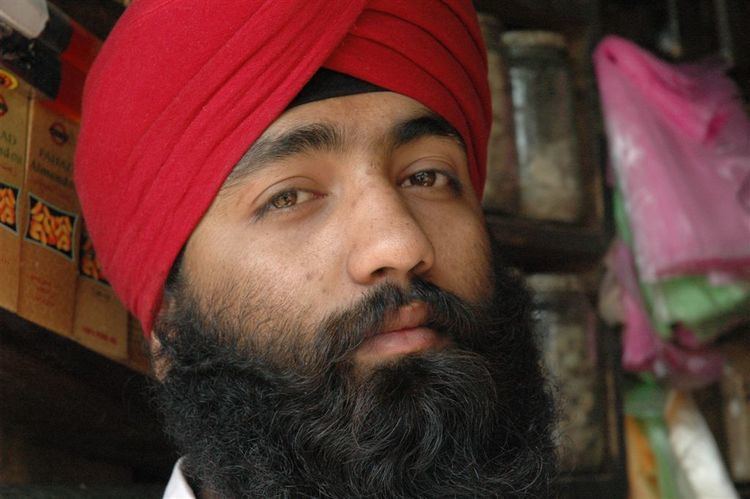 | ||
Sikhism in Afghanistan is limited to small populations, primarily in major cities, with the largest numbers of Afghan Sikhs living in Jalalabad, Kabul, and Kandahar. These Sikhs are Afghan nationals and mostly Pashto-speakers, though some also use Dari, Hindi or Punjabi. Their total population is around 1200 families or 8000 members.
Contents
Kabul
During the Afghan Civil War of the 1990s, seven of Kabul's eight Gurdwaras were destroyed. Only Gurdwara Karte Parwan, located in the Karte Parwan section of Kabul, remains.
Jalalabad
As of 2001, Jalalabad had 100 Sikh families, totaling around 700 people, who worship at two large Gurdwaras. Legend states that the older of the Gurudwaras was built to commemorate the visit of Guru Nanak Dev Ji.
Kandahar
Kandahar has a remarkably small Sikh community, with only about 15 families living there as of 2002.
Early history
Some early Khatri Sikhs established and maintained colonies in Afghanistan for trading purposes. Later, conflicts between the Sikh misls and empire against the Afghan-based Durrani Empire led to tension. Sikhs also served in the British Empire's military during several operations in Afghanistan in the 19th century.
Civil war
During the 1980s Soviet war in Afghanistan, many Afghan Sikhs fled to India, where the Sikh community is well-established; a second wave followed following the 1992 fall of the Najibullah regime. Sikh gurdwaras (temples) throughout the country were destroyed in the Afghan Civil War of the 1990s, leaving only the Gurdwara Karte Parwan in Kabul.
Under the Taliban, the Sikhs were a relatively tolerated religious minority, and allowed to practice their religion. However, the Sikh custom of cremation of the dead was prohibited by the Taliban, and cremation grounds vandalized. In addition, Sikhs were required to wear yellow patches or veils to identify themselves.
Karzai administration
By tradition, Sikhs cremate their dead, an act considered sacrilege in Islam. Cremation has become a major issue among Sikh Afghans, as traditional cremation grounds have been appropriated by Muslims, particularly in the Qalacha area of Kabul, which Sikhs and Hindus had used for over a century. In 2003 Sikhs complained to the Afghan government regarding the loss of cremation grounds, which had forced them to send a woman's body to Pakistan to be cremated, following which the Minister of Religious affairs investigated the issue. Though the grounds were reported as returned to Sikh control in 2006, though in 2007 local Muslims allegedly beat Sikhs attempting to cremate a community leader, and the funeral proceeded only with police protection. As of 2010, cremation in Kabul is still reported as being disapproved of by locals.
Sikhs in Afghanistan continue to face problems, with the issue of the Sikh custom of cremation figuring prominently. City development also threatens to destroy the Gurudwara Karte Parwan and adjoining shrine to Guru Nanak.
In September 2013, Afghan President Hamid Karzai signed a legislative decree, reserving a seat in the National Assembly of Afghanistan for the Hindu and Sikh minority.
Diaspora
Before the 1990s, the Afghan Sikh population was estimated around 50,000. As of 2013, they are around 800 families of which 300 families live in Kabul. Sikh leaders in Afghanistan claim that the total number of Sikhs are 3,000. Many Sikh families have chosen to emigrate to other countries including, India, North America, the European Union, the United Kingdom, Pakistan, and other places.
